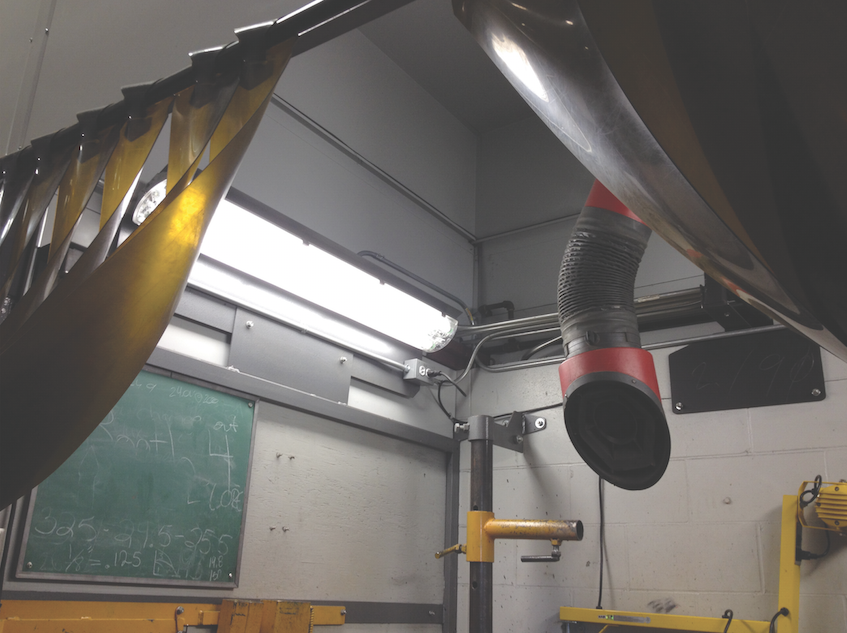By Megan Lambert (The Cascade) – Email
Print Edition: July 15, 2015
 Soon after UFV students began noticing traces of particulate in the new welding booths, a private company came in and took air quality samples while students wore respirators to continue working on projects.
Soon after UFV students began noticing traces of particulate in the new welding booths, a private company came in and took air quality samples while students wore respirators to continue working on projects.
The booths were part of a $750,000 capital grant for welding ventilation upgrades from the BC government. The plan was to add hoods onto the open cubicles. Each hood has a fan with varying speeds — the fan turns on when the student enters the booth, adjusts its speed accordingly to how the student works, and then turns off when they leave. Dean of applied and technical studies John English says the grant was supposed to supply a more efficient system.
“They’re supposed to be better at drawing off all the hazards that are produced during welding,” he says.
But when powder started collecting on the hoods, an undisclosed private company — whose name was not released by press time — came in to take samples of the air.
It turns out that the levels of manganese present in the welding rods are above the WorkSafe BC industry standard, and the booths were not picking up enough particulate.
“I’m actually pretty confident that we can solve this with an engineering system,” English says. “It’s just a matter of how big it is, and how much does it cost?”
Other universities have also made use of the provincial grant. Welding shops in BCIT, Camosun College, and Okanagan College have also installed the upgrades.
BCIT Media Relations Coordinator Jocelyne Leszczynski says that BCIT hasn’t had any issues with the upgrades. “After talking to the dean, people in the school, and being there myself, there’s nothing wrong with it,” she says. “We’ve won awards for it, actually.”
As for UFV, it may be the structure of the shop that is causing problems. English says it’s possible, but unlikely. “We need a system-wide way of addressing this,” he says. “We need to see whether this is something unique about us — which I doubt — or whether it’s at a system level.”
English says the plan is to adjust the speeds of the fans — but if that doesn’t work, they’ll have to appeal to the province for a potential redesign of the upgrades.
“We would have to go talk to WorkSafe BC and say we can’t be the only ones on Earth having this challenge,” he says. “We’d have to bring the province into the equation.”
In the meantime, UFV ran a test Monday, July 1 to measure the particulate with the fans running at 1,000 cubic feet per minute rather than the previous 800 cubic feet per minute. The welding faculty also repositioned the air extraction equipment, long vacuum-like hoses called snorkels, closer to the students. English says this might work for the test, but it’s unlikely to be an efficient long-term solution.
“We may not have, as the system sits there today, the total capacity to draw 1,000 cubic feet per minute off every snorkel,” he says.
At time of print, the results of that test are not yet available. The Cascade will continue to cover this story in the coming weeks.


